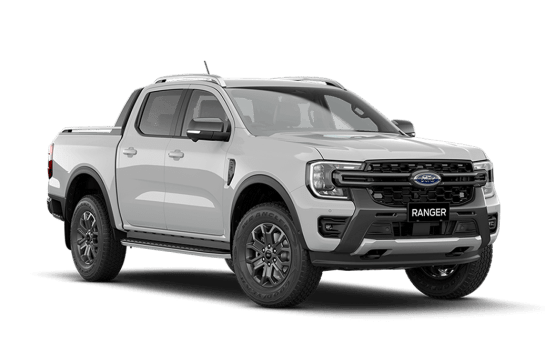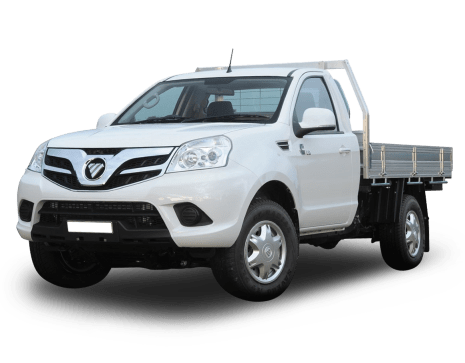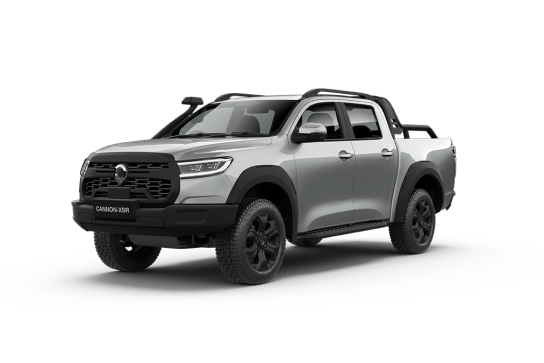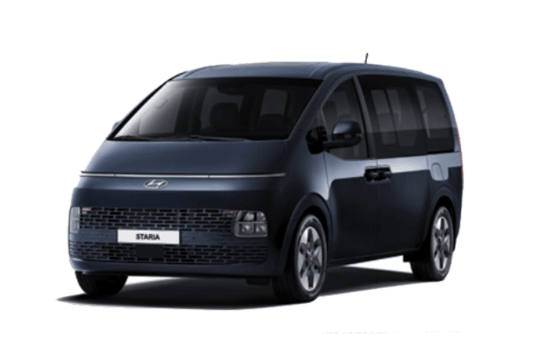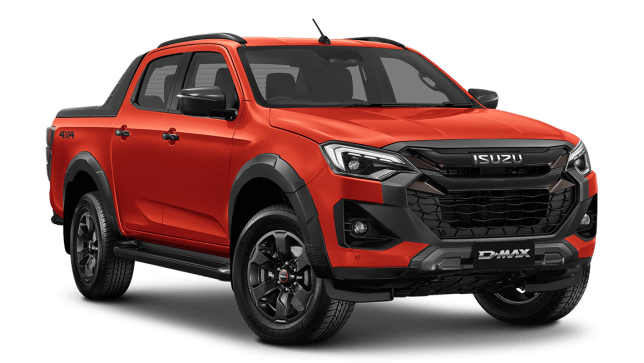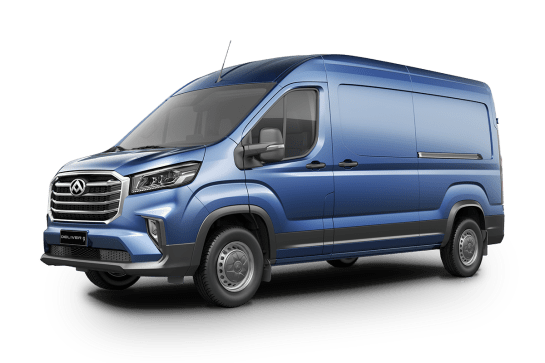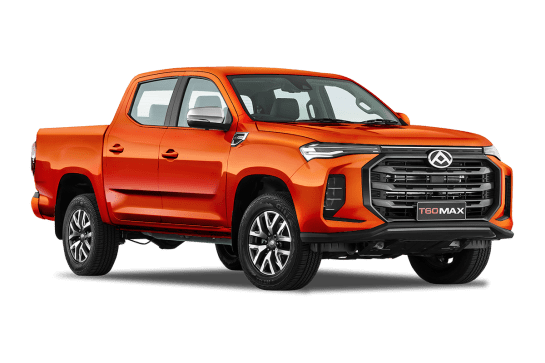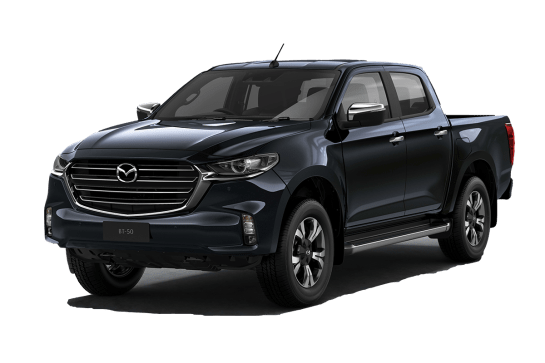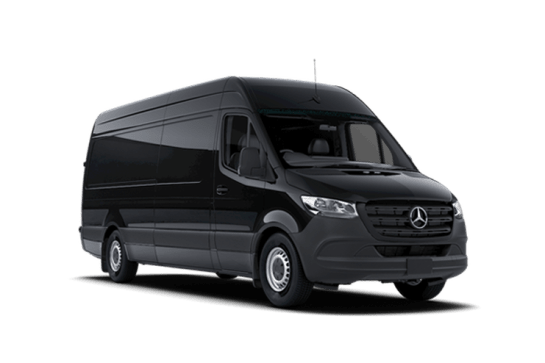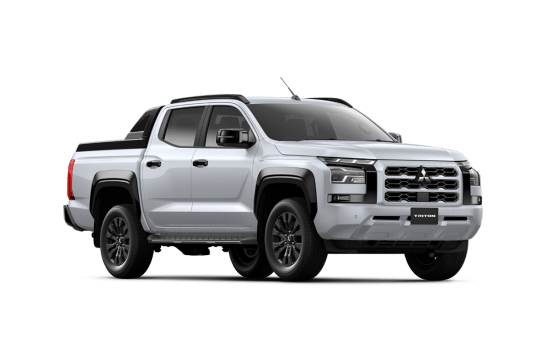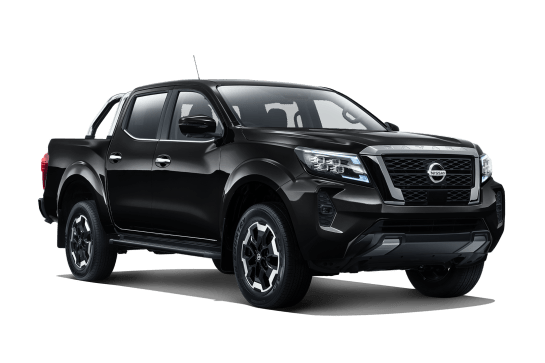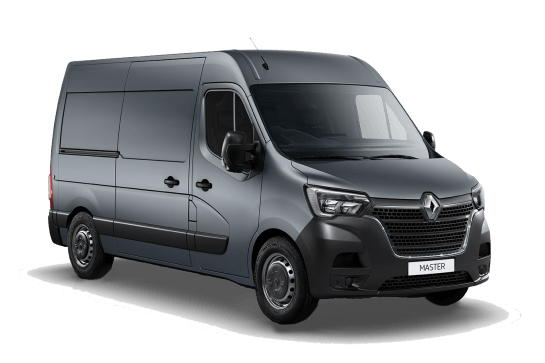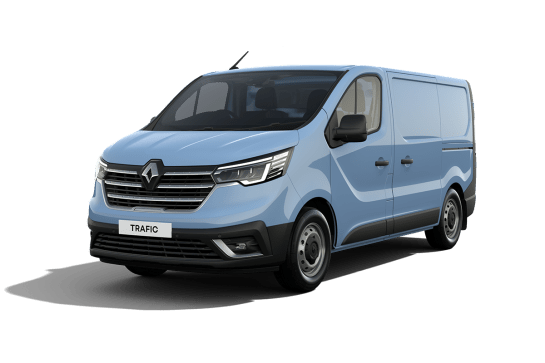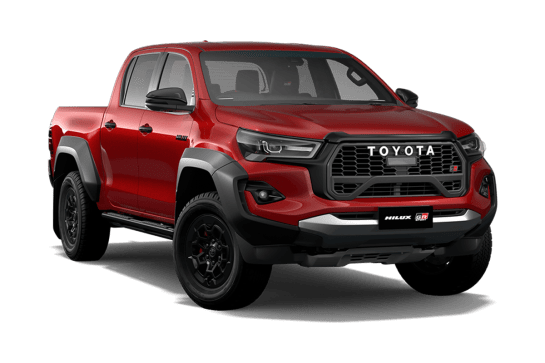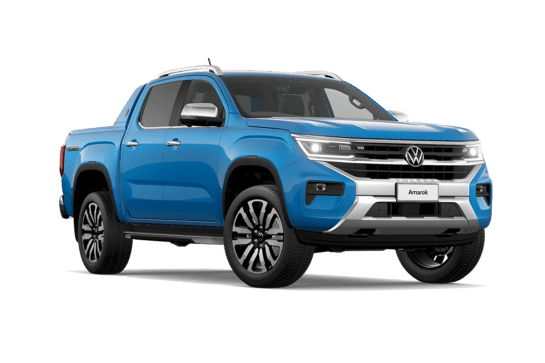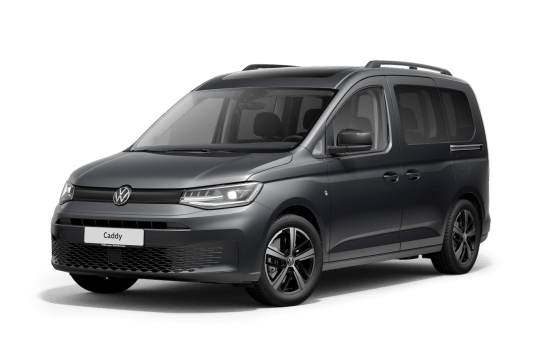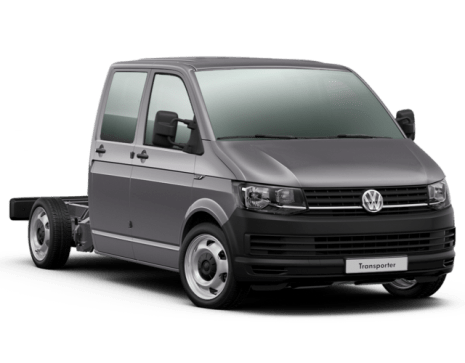
Toyota Hiace VS Renault Master
Toyota Hiace
Likes
- Turning circle
- GVM/GCM ratings
- Robust and practical
Dislikes
- Highway cargo bay noise
- No load-floor liner
- Short service intervals
Renault Master
Likes
- Effortless diesel engine
- Good value
- Improved interior a big step up
Dislikes
- Manual shift not the most positive
- Well behind rivals on safety
- No proper automatic option
Summary
Toyota Hiace
Latest VFACTS new vehicle registration figures show that in 2024 the Toyota HiAce one-tonne van commands more than 46 per cent of the 2.5 to 3.5-tonne GVM segment.
In other words, almost every second new mid-sized van sold in Australia is a HiAce, leaving numerous competitors from Korean, European and Chinese manufacturers to fight over the remaining buyers.
So, why does the only Japanese competitor in this crowded space maintain such dominance? We recently became reacquainted with this venerable workhorse in search of answers.
Read more about
- Hybrid family SUV's next-gen overhaul unlikely to be 'dramatic': 2025 Toyota RAV4 hybrid may follow Camry's lead with mild makeover for Mazda CX-5 and Mitsubishi Outlander rival: Report
- Toyota's dominance revealed: 2025 Toyota RAV4 Hybrid smashes the Toyota HiLux, Ford Ranger, Mazda CX-5 and Mitsubishi Outlander in August sales
- "I'm not sure I'd want to be a single EV-only manufacturer right now": Toyota Australia said people want hybrids putting heat on electric cars such as the Tesla Model Y, BYD Seal and MG4
| Safety rating | |
|---|---|
| Engine Type | 2.8L turbo |
| Fuel Type | Diesel |
| Fuel Efficiency | 8.2L/100km |
| Seating | 2 seats |
Renault Master
The Renault Master range has been refreshed, and this was our first chance to see what changes have been made.
You should be able to tell just by the look of the 2020 Master that there’s a new design with a more modern looking front-end. And the inside has been thoroughly modernised, too.
But with contemporary rivals such as the VW Crafter and Mercedes-Benz Sprinter - both of which launched in all-new generation guises in 2018 - the question is whether the ageing, yet facelifted Master is worthy of consideration.
We spent a week with it - and covered plenty of kays in it - to find out.
| Safety rating | — |
|---|---|
| Engine Type | 2.3L turbo |
| Fuel Type | Diesel |
| Fuel Efficiency | 8.3L/100km |
| Seating | 3 seats |
Verdict
Toyota Hiace8/10
When you consider its competitive pricing (particularly for fleets), resolute resale value, robust construction, rock-solid reliability, excellent load-hauling ability, five-star safety and all-round practicality, it’s not hard to understand why the HiAce is such a popular workhorse. It’s not perfect, like any van, but when performing its intended role it’s very good.
Renault Master6.4/10
If you’re after a budget-conscious offering in the large van segment, the Renault Master could be a really solid proposition. It falls short of the safety expectations set by its newer rival, though, and that’s something you might not be able to put a price on.
Design
Toyota Hiace
Toyota’s unwavering adherence to rear-wheel drive ensures the HiAce has an inherent traction advantage over its predominantly front-wheel-drive rivals, particularly when hauling heavy payloads on low-grip surfaces.
Rear-wheel drive also ensures the front wheels can be turned sharply enough for its 3210mm wheelbase to deliver an impressively tight 11.0-metre turning circle. And its 1990mm height also allows access to underground loading docks and multi-storey car parks.
The chassis design is simple and robust with MacPherson strut front suspension, a leaf-spring live rear axle, variable-ratio rack and pinion steering and (on automatic variants) four-wheel disc brakes.
There’s no mesh-type cargo barrier or solid bulkhead between the cargo bay and cabin (but both are also available as genuine accessories) and the black door-handles and unpainted black plastic front and rear bumpers are designed to best withstand the wear and tear often evident in these areas on hard-working vans.
The two-tone dash layout is neat and functional, with clear analogue instrumentation and dash controls (mostly physical dials and buttons) that are easy to reach and operate. And it sticks with a good old lever-type manual handbrake instead of an electric one. All are chosen for their rugged simplicity.
The only useful item missing is a fold-down inboard armrest for the driver’s seat, offered by numerous rivals to reduce neck and shoulder strain during long days behind the wheel.
Renault Master
The front-end styling of the Master has been modernised with a “robust” new look which sees it adopt a more upright nose with a bulkier grille, squared-off headlights (with LED daytime running lights as standard, along with halogen headlights).
There were no other changes made to the exterior, so if you see it side on or from the rear, you’d be hard pressed to tell if it's the new model.
This is the second facelift for this generation (X62) Master, which originated back in 2010. It is also offered in some markets as a Nissan, Opel, and Vauxhall. And this version certainly freshens up the appearance, though the practicality of the Master line-up remains unchanged.
That’s a good thing: you can still get the van as a short-wheelbase with low roof (L1H1), a mid-wheelbase with mid roof (L2H2), a long-wheelbase with mid roof (L3H2), or an extra-long-wheelbase with high roof (L4H3). There’s also the choice of a single cab-chassis Platform ute model, too.
Our test model is the L2H2, meaning dimensions of 5575mm long on a lengthy 3682mm wheelbase (giving it a 13.6-metre turning circle), while the width is 2070mm and the height is 2499mm. Too tall for car parks (and drive-thru windows, in this age of social distancing).
The good news about the height, though, is that it allows you excellent interior dimensions. The cargo hold of this version is 3083mm long, 1765mm wide (and 1380mm between the wheel-arches, enough for Aussie pallets to slide in easily), and the height is 1894mm inside. I’m six-foot tall (1820mm) and that meant I could safely step in and out of the cargo zone without fear of hitting my head. The load space is 10.8 cubic metres in this spec.
As you’ll see in the interior section, the cabin has been given a bit of attention too - you can see it in the images below.
Practicality
Toyota Hiace
Our barn-door-equipped test vehicle has a hefty 2245kg kerb weight and 3300kg GVM, which results in a genuine one-tonne-plus payload rating of 1055kg. Up to 120kg of that weight can be carried on Toyota’s triple roof-rack set.
It’s also rated to tow up to 1500kg of braked trailer, which is less than some rivals but in reality should adequately cover most towing requirements of van operators.
And with its 4800kg GCM rating (or how much weight it can legally carry and tow at the same time), that means it can carry its maximum payload while towing its maximum trailer weight. So, that’s a combined total of more than 2.5 tonnes of cargo-carrying ability, which would comfortably meet or exceed most job requirements.
The generously-sized cargo bay, which offers an impressive 6.2 cubic metres of load volume, is accessed from either side through sliding doors with large 1010mm openings, or from the rear through the optional barn doors which can be opened to 180 degrees (with special lower hinges to hold them there) allowing easy access for forklifts.
The cargo bay is 2530mm long, 1760mm wide and 1340mm high and with 1268mm between the rear wheel housings it can swallow up to two standard Aussie pallets or up to three Euro pallets, held in place by a choice of six load-anchorage points.
There’s plenty of internal lighting, the walls and doors are lined to mid-height and the roof features a full-length internal lining, which is unusual for vans and we suspect contributes to suppression of tyre noise emanating from the rear wheel housings.
Cabin storage includes a large bottle holder and bin in the base of each front door, small-bottle/cupholders on either side of the dash and in the centre, plus a single glove box. The well-designed centre console offers another two bottle holders plus large internal storage, which is capped by a hinged lid that multi-tasks as a shallow storage tray and handy work desk.
Renault Master
Like all vans in this segment there are some cabin smarts that will make your life a lot easier if you spend a lot of time in the cockpit.
There are storage options aplenty, including overhead folder holders, a trio of dash-top storage caddies, dash-top cup holders, huge door pockets with bottle holders, some smaller storage cubbies near the shifter, and a glovebox that is, in the French tradition, good to hold a pair of gloves and not much else. This model had the dual passenger bench seat, with a hidden storage section underneath, and you can fold the middle seat down to form a desk platform with cup holders if that’s what you need.
Along with the storage smarts, the updated Master has seen some major changes in terms of infotainment intelligence, too. The new 7.0-inch MediaNav touchscreen system with Apple CarPlay and Android Auto is a welcome advancement for the brand, and during my time in the vehicle it proved simple to use and quick to react. The sound isn’t terrific, with just two speakers fitted, and I had to turn it up pretty loud to overcome the wind noise from this mid-roof model.
The driver’s seat is comfortable and offers decent adjustment, with height and lumbar adjustment. It’s easy to step up into the cab, too, despite there not being side grab handles. The driver also gets a new digital instrument display section on the redesigned dashboard, which includes a gear-shift indicator (but not a gear position indicator), and a digital speedometer and trip computer.
The steering wheel is new, too, and it’s much nicer than the old grainy plastic number in the pre-facelift version. Gone are the round vents across the dash and round plastic sections of the old model - now there are squared-off, more modern looking finishes that clearly aim to mimic the exterior’s now boxy-edged body.
In the cargo zone there are multiple tie-down hooks (eight on the floor, four on the side wall pillars), making for plenty of options to secure a load - though as can often be found with these eye-hook points, they can be a little too far inboard to make good use of, and in the Master’s case, there are no tie-down points rear of the wheel-arches. There is a 12-volt outlet in the back pillar, however.
Price and features
Toyota Hiace
Our test vehicle is equipped with Toyota’s ubiquitous 2.8-litre four-cylinder turbo-diesel shared by all models in the HiAce range. However, ours is equipped with the optional six-speed automatic and rear barn doors which raises the list price to $51,636.
Even so, that’s still within the ballpark of its closest rivals including the LDV G10+ Barn Door ($40,063), Hyundai Staria Load Barn Door ($46,740), and Ford’s new Transit Trend LWB Barn Door ($57,590).
Our example is also equipped with a solid-walled left-side sliding door (in preference to the standard offering with window), which HiAce buyers can specify at no extra cost when ordering.
The two-seater HiAce comes standard with 'French Vanilla' paint and 16-inch steel wheels with replaceable plastic covers, 215/70R16 tyres and a full-size spare, but there’s no protective load-floor liner for the cargo bay (a Toyota genuine accessory is available).
There’s also halogen headlights and DRLs (no fancy LEDs here, folks) and the neat two-tone cabin has a tilt/reach adjustable leather-accented steering wheel, power-adjustable lumbar support on the driver’s seat, one USB port and two 12-volt cabin sockets, plus a large centre console that offers numerous storage options.
The driver also gets a 4.2-inch driver’s info display and there’s an 8.0-inch touchscreen (plus steering wheel switches) to control the two-speaker infotainment system, which offers multiple connectivity including Apple CarPlay/Android Auto, Bluetooth, digital radio and more.
Renault Master
The 2020 update for the Renault Master saw prices adjusted to compensate for additional standard equipment now offered range wide.
You can read the full pricing and specs breakdown story here, but the standard goodies for the Master include: a new 7.0-inch touchscreen media system with USB input, Bluetooth, Apple CarPlay, Android Auto, sat nav and reversing camera display, a two-speaker sound system, rear parking sensors, 16-inch steel wheels with a full size spare fitted under the rear body, body-protective cladding, twin-view side mirrors with electric adjustment, electric windows, cruise control, air conditioning, remote central locking, halogen headlights, LED daytime running lights, and rear fog lights.
The list price for the L2H2 mid-wheelbase manual model used in this review is $47,490 plus on-road costs (RRP or MSRP), but Renault is advertising this exact spec for $47,990 drive-away, which is pretty compelling - you don’t even need to be an ABN holder for that discount.
The Master MWB van comes as standard with barn doors at the rear (270-degree opening), and a sliding side door on kerb side (left), while SWB models get 180-degree barn doors. It also features a steel bulkhead as standard, as well as a three-seat layout up front. There’s a handy lift-up base on the bench part of the seat, which allows you about 100 litres of hidden storage if you need it.
There are numerous options for buyers to customise their van to suit what they need. There are several packs to choose from, such as: the Trade Pack - wooden floor, full height timber wall lining, rear step, LED ceiling lights ($1600); the Business Pack - front fog lights, hands-free key card and push-button start, chrome exterior and interior trim finishes ($1000); and the Convenience Pack - auto high/low beam lights, lane departure warning, blind spot monitoring and front parking sensors ($1000).
You can option individual elements such as a driver’s side sliding door ($800), a driver’s suspension seat ($800 - removes the side airbag for the driver), a single passenger seat ($200 - N/A with driver suspension seat, adds passenger-side airbag protection), and if you choose RWD model there’s an available differential lock ($1000). Last but not least, you can have glazed dual sliding doors for $800, but only if you also option the Trade Pack.
Colour options include no-cost solid paint finishes in white, grey, dark blue, light blue, yellow, orange and red (the interesting colours will need to be pre-ordered). There are also three metallic paint options in grey, black or a silver/blue look, and the cost there is $1000.
Under the bonnet
Toyota Hiace
Toyota’s well-proven 1GD-FTV 2.8 litre four-cylinder turbo-diesel, which also powers Toyota’s HiLux, Fortuna and Prado model lines, produces 130kW at 3400rpm and (in auto models like ours) 450Nm of torque between 1600-2400rpm. Its Euro 5 emissions compliance doesn’t require AdBlue, which minimises maintenance and running costs.
The refined and smooth-shifting six-speed torque converter automatic offers the choice of sequential manual shifting if required. Fuel efficiency is also optimised with full torque converter lock-up on fourth, fifth and sixth gears, along with overdrive on fifth and sixth being ideal for highway driving. The inherent traction advantage of rear-wheel drive is enhanced by an electronically controlled automatic limited-slip diff.
Renault Master
The power outputs and torque figures depend on the transmission you choose.
Despite the fact that both manual and automatic versions of the Master run a 2.3-litre four-cylinder diesel engine, there’s a difference between the engines: the version with the six-speed manual transmission is a twin-turbo unit, while the six-speed automated manual transmission makes use of a single-turbo diesel.
There’s not much in it when it comes to the difference in outputs, however.
The manual version has a slight horsepower advantage, with 120kW of power (at 3500rpm) and 360Nm of torque (at 1500rpm).
The automated manual has a maximum power of 110kW (at 3500rpm) and 350Nm of torque (at 1500rpm).
Both transmissions are geared the same across all six ratios, though from experience, the automated manual is best left at the showroom. While rivals offer conventional torque converter automatic gearboxes to appeal to a broader customer base globally, the French brand persists with its pernickety somewhat-auto option instead.
The majority of models in the Master range are front-wheel drive (FWD), but there are a couple of long-wheelbase rear-wheel drive (RWD) models available. None are all-wheel drive (AWD) or four-wheel drive (4WD).
You might be interested to note the weight specs for the Master range. There are too many variables to bore you with here, but the details on the L2H2 mid-wheelbase manual I tested, according to Renault Australia, are as follows: kerb weight - 1887kg; gross vehicle mass/GVM - 3510kg; payload - 1623kg; towing capacity - 750kg un-braked, 2500kg braked. The gross combination mass (GCM) is 6000kg.
Efficiency
Toyota Hiace
Toyota claims combined average consumption of 7.9L/100km for our test vehicle, but the dash readout was showing 11.0L/100km when we stopped to refuel after 270km of testing.
This was conducted with the engine’s auto start/stop function switched off and comprised a mix of city, suburban and highway driving, of which about one third was hauling a near-maximum payload.
Our own figure, calculated from actual fuel bowser and tripmeter readings, was higher again at 11.8, which still isn’t bad for a vehicle with a kerb weight exceeding 2.2 tonnes driven mostly in busy urban traffic and hauling almost one tonne during our test. So, based on our ‘real-world’ consumption figures, you could expect a driving range of around 600km from its 70-litre tank.
Renault Master
There is no official combined fuel consumption claim figure stated by Renault, as the vehicle falls into the heavy commercial vehicle space.
But I can tell you it’s pretty impressive for fuel economy. I saw an average of just 8.5 litres per 100 kilometres over more than 1000km of testing - more than half of which was with the van loaded up with hundreds of kilograms of load.
With a 100-litre diesel tank, you could theoretically get about 1150km to a fill, and that’s with a mix of loaded and unloaded driving.
One thing, though: most vehicles have a graphic on their dashboard to show which side the filler neck is - you know, you see a fuel bowser and the filler is on the right, that means your vehicle’s filler is on the right. Not in the Master. It has a graphic with the filler on the right, but the actual fuel cap is on the left. And like most vans, you have to open the passenger door to fuel up.
Worried about AdBlue? No need - the engine used in the Master range is a Euro 5 unit, so there is a diesel particulate filter, but no urea after treatment setup to mention.
Driving
Toyota Hiace
It’s easy for drivers of most shapes and sizes to find a comfortable driving position in the spacious cabin, given its height/reach adjustable steering wheel, large left footrest and supportive seating with power-adjustable lumbar support.
Although there’s a huge blind spot over the driver’s left shoulder created by the solid walls of the cargo bay, active driver aids including blind-spot monitoring, rear cross-traffic alert and rear-view camera minimise the potential hazards of changing lanes and reversing out of driveways into busy traffic.
Braking is reassuringly strong and the steering is responsive, with easy manoeuvrability thanks to the conspicuously tight turning circle and lightness of the variable-ratio steering at parking speeds.
The ride quality is reasonably supple when unladen or lightly loaded and, for a van without a bulkhead between the cabin and cargo bay, has comparatively low internal noise levels at speeds up to 80km/h.
The 2.8-litre turbo-diesel, with its sizeable 450Nm of torque, has strong low-rpm response and displays good flexibility in city and suburban driving.
Its performance is optimised by the smooth-shifting six-speed auto, which also delivers fuel-efficient highway travel that requires less than 2000rpm to maintain 110km/h. The sequential manual-shifting function can be handy in certain situations, like carrying/towing heavy loads in hilly terrain.
To test its GVM rating we forklifted 890kg into the cargo bay, which combined with the driver equalled a total payload of 990kg that was only 65kg shy of its 1055kg limit.
The stout rear leaf-springs only compressed about 30mm under this loading, which left more than 60mm of static bump-stop clearance that was more than enough to ensure there was no bottoming-out on our test route.
The turbo-diesel’s ample torque made light work of hauling this payload in city, suburban and highway driving. It was also particularly strong in the hills, where it easily conquered our 13 per cent gradient, 2.0km-long set climb in third gear.
Engine braking on the way down, in a manually selected second gear, wasn’t as strong but far from disgraced given the near one-tonne payload it was trying to restrain. Even so, its four-wheel disc brakes were more than capable of keeping speeds in check.
Our only criticism is the high internal noise levels at highway speeds, when tyre roar through the rear wheel housings can become intolerable over long distances, particularly on coarse bitumen surfaces with an empty cargo bay amplifying the noise.
In our experience, this is a problem shared by all vans at these speeds if they’re not equipped with a sealed cabin bulkhead. So, if your work involves a lot of highway travel, we would recommend fitting one that's available in Toyota’s genuine accessories range. Or buying some earplugs.
Renault Master
I did a mix of driving in the Master over the week I had it, including more than 600km of unladen driving.
Why so many kays? I used it to move house, which meant I completed two “full” trips between Sydney’s inner-west and Cowra in the Central West of NSW, and two “empty” trips back to Sydney, as well.
I’ll get to how it drove with a load on board in the section below, but the unladen experience was pretty positive.
The engine and transmission are well teamed, and there’s a good amount of usable torque and very little lag to speak of.
As with this entire generation of engines - a derivative engine in a different state of tune is used in the Nissan Navara - the refinement is mostly good until you reach higher in the rev range, where it can get a bit noisy and clattery. But the best work is done down low in the rev zone anyway.
The manual shift action isn’t what I’d call “slinky”, more “clicky”. But it’s easy to row between gears as the action is light and the clutch isn’t too heavy, either. The gearing is generous, meaning you can saunter in sixth gear around 70km/h without the engine labouring too hard, and it’ll accelerate from there to freeway pace - provided you’re not going uphill.
There is a bit of ratio management required if you encounter a steep incline, but generally it’s a decently strong powertrain for its intended use - more on that below.
I’m always astounded about the steering and ride characteristics of vans of this size. Yes, it’s large, and yes, it can get blown around a little by crosswinds, and yes, you need to factor in the longish-wheelbase and larger turning circle that results from that… but it drives a lot smaller than it is.
The steering is direct and accurate, easy to judge at high or low speeds - which is great news when you’re parking (and there’s a good quality reversing camera and rear parking sensors, but you’ve just gotta remember the roof height, too).
The ride is adequate without a load on board, too. The independent McPherson strut front suspension copes well with changes in surface and bump control, though it can be a little bouncy at times. The rear suspension is a leaf-spring torsion beam setup, and it can be a little clumsy over road joins when unladen.
It also brakes well, with solid and trustworthy response from the four-wheel disc brakes at all speeds.
Safety
Toyota Hiace
The HiAce has a five-star ANCAP rating awarded in 2019 which will expire in December 2025. It comes with seven airbags plus benchmark active safety features including AEB with pedestrian and daytime cyclist detection, lane departure alert with braking assist, speed sign recognition, blind-spot monitoring, rear cross-traffic alert, front and rear parking sensors, reversing camera and more.
Renault Master
While there has been a safety revolution in the van segment in recent years led by Mercedes and VW, Renault has been left behind to a degree.
The Renault Master has never been put through NCAP or ANCAP crash testing. So there’s no safety star rating to speak of.
And it falls short of its chief rivals, as it doesn’t have any sort of auto emergency braking (AEB) or forward collision warning system at all.
It has a reversing camera and rear parking sensors, plus dual front airbags and driver’s side airbag protection (not passenger though?), and there are no curtain airbags either. But it has electronic stability control (ESC), electronic brake force distribution, and hill start assist with Renault’s Grip X-tend system that is designed to allow better traction in slippery situations.
You can option some safety technology into the manual versions of the Master, by way of the Convenience Pack. For $1000 it adds auto high/low beam lights, lane departure warning (not active lane keeping assist), blind spot warning (not rear cross-traffic alert), and front parking sensors.
I understand the argument that buyers shouldn’t have to pay for anything they don’t need, especially when it comes to business vehicles. But I hope that behind closed doors Renault is working furiously to improve the safety equipment offering as a matter of priority.
Ownership
Toyota Hiace
It is covered by a five-year/unlimited km warranty. Scheduled servicing is a relatively short six months/10,000km intervals, whichever occurs first. Capped-price of $290 per service covers the first six scheduled services over three years or 60,000km.
Renault Master
The Renault van range is covered by a warranty plan that isn’t as good as you’ll get from VW or Ford. That is, the Master (and Trafic and Kangoo below it) have a three-year/unlimited kilometre warranty cover, which is two years shorter than the best in the class.
Service intervals are business-friendly at 12 months/30,000km, with a capped-price service plan spanning the first three years/90,000km. The service price is $599 per visit, but keep in mind you will need to replace the coolant ($132) and brake fluid ($79) every 60,000km. There’s also an accessory belt replacement at 90,000km ($506).
If you service your van at Renault, you’ll also be eligible for up to four years of roadside assistance cover. From the showroom floor there is 12 months cover.
Concerned about issues, problems, recalls, questions, queries, complaints, or reliability issues? Check out our Renault Master problems page.



